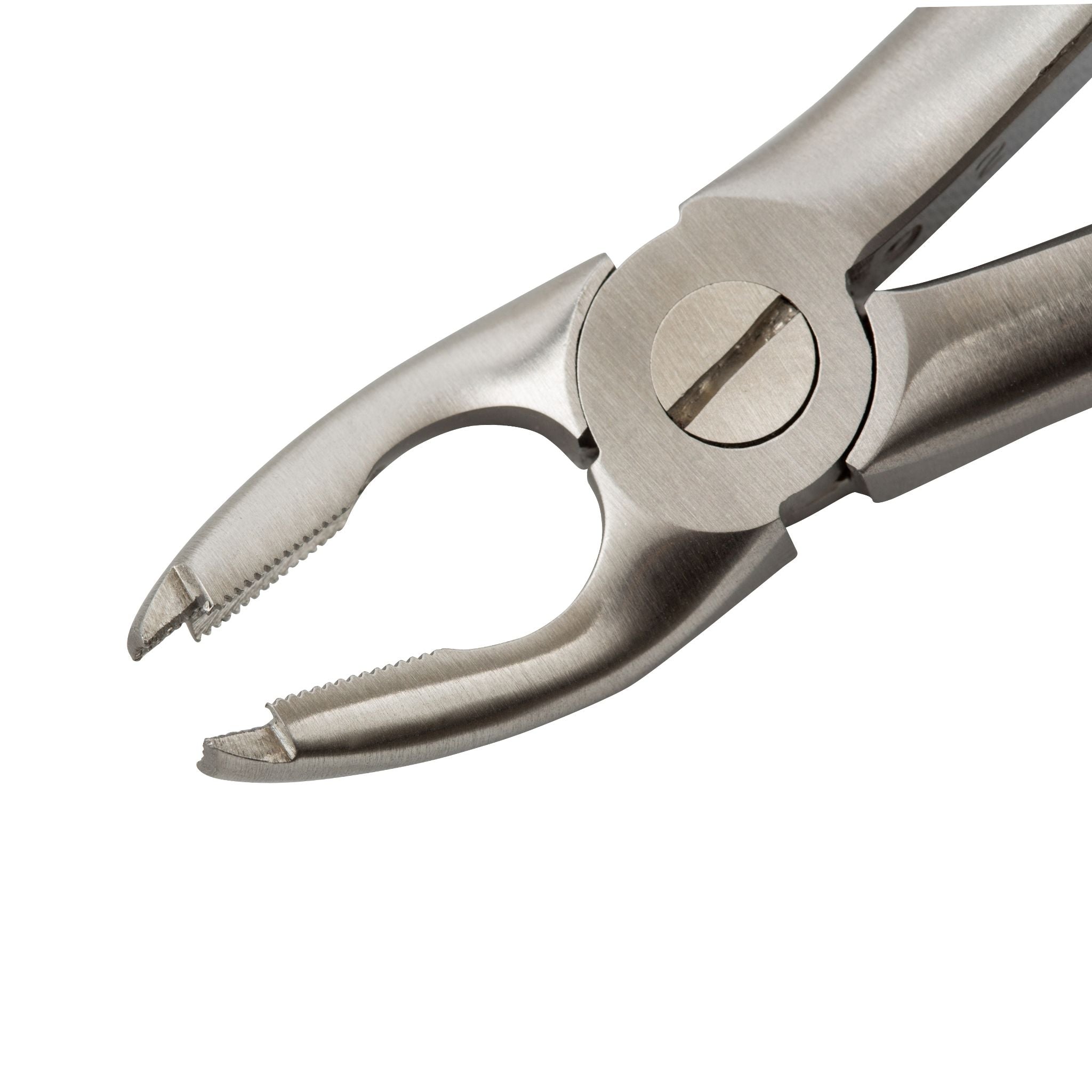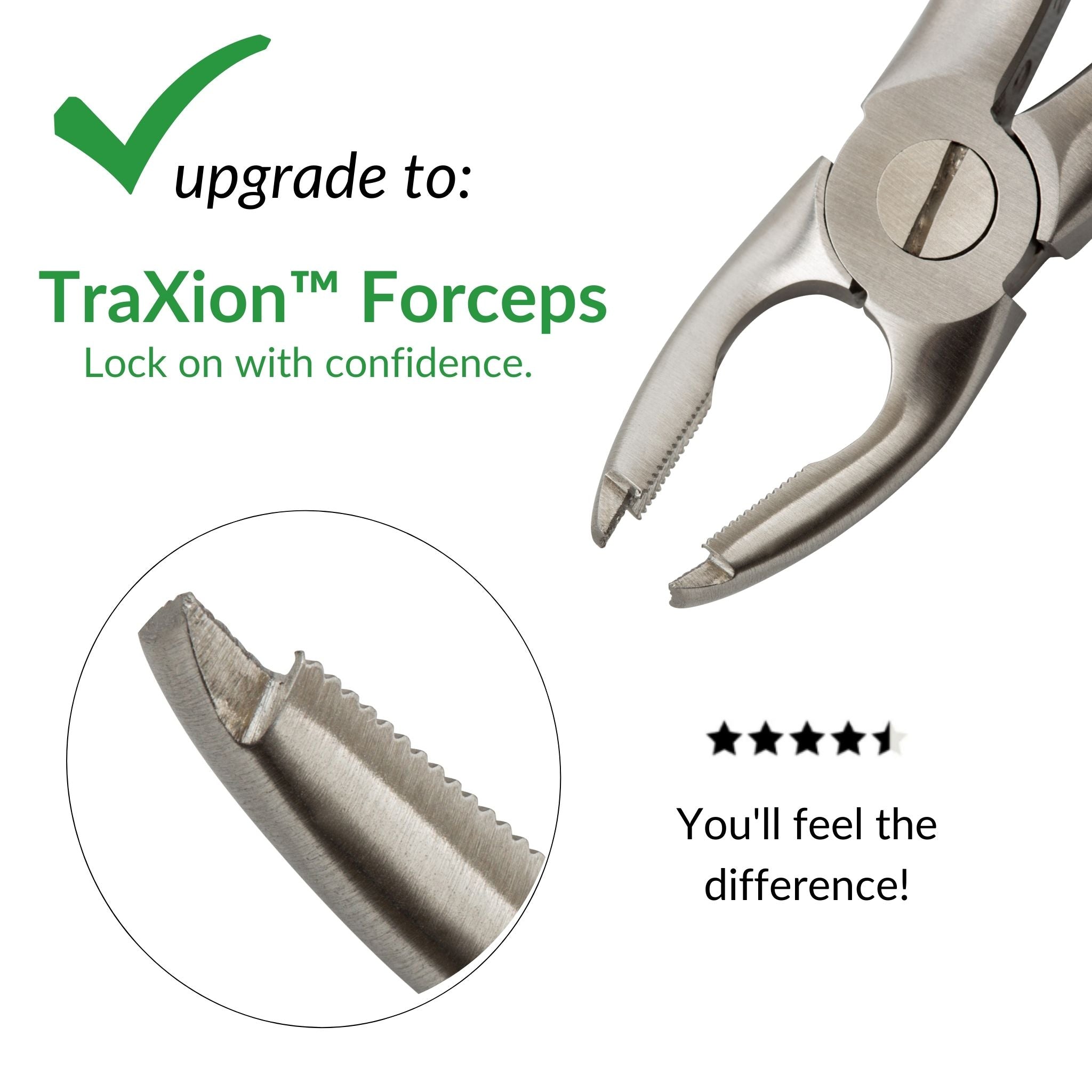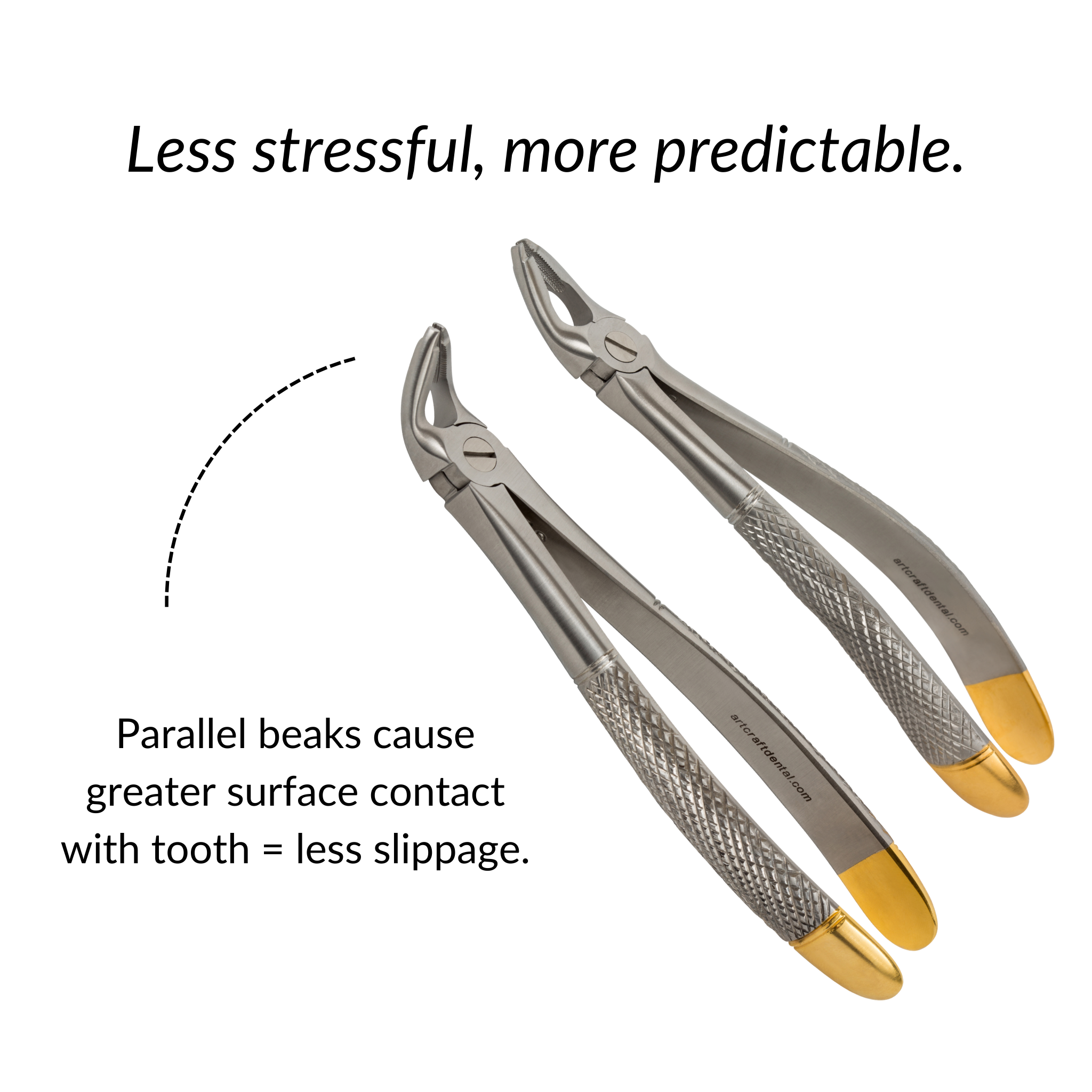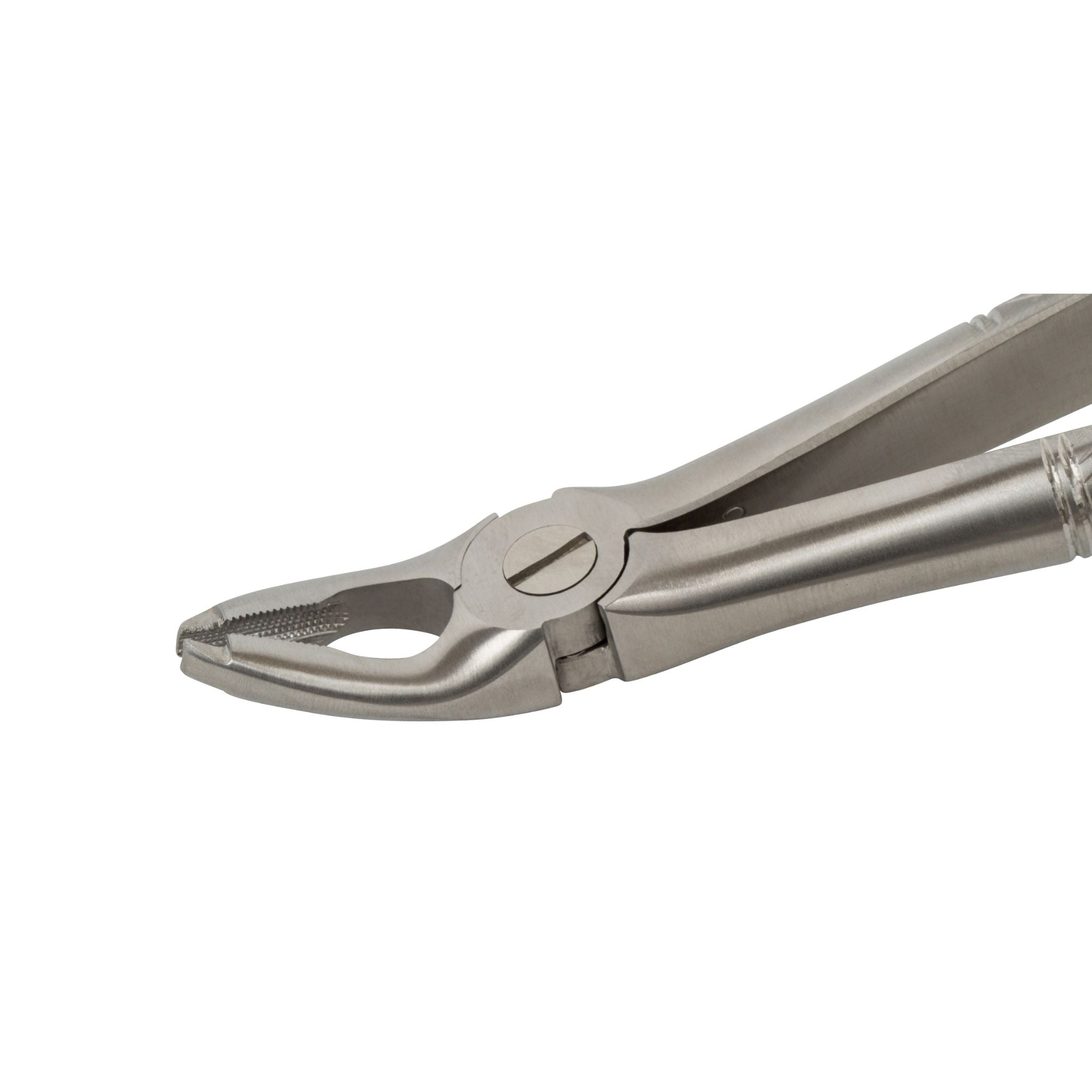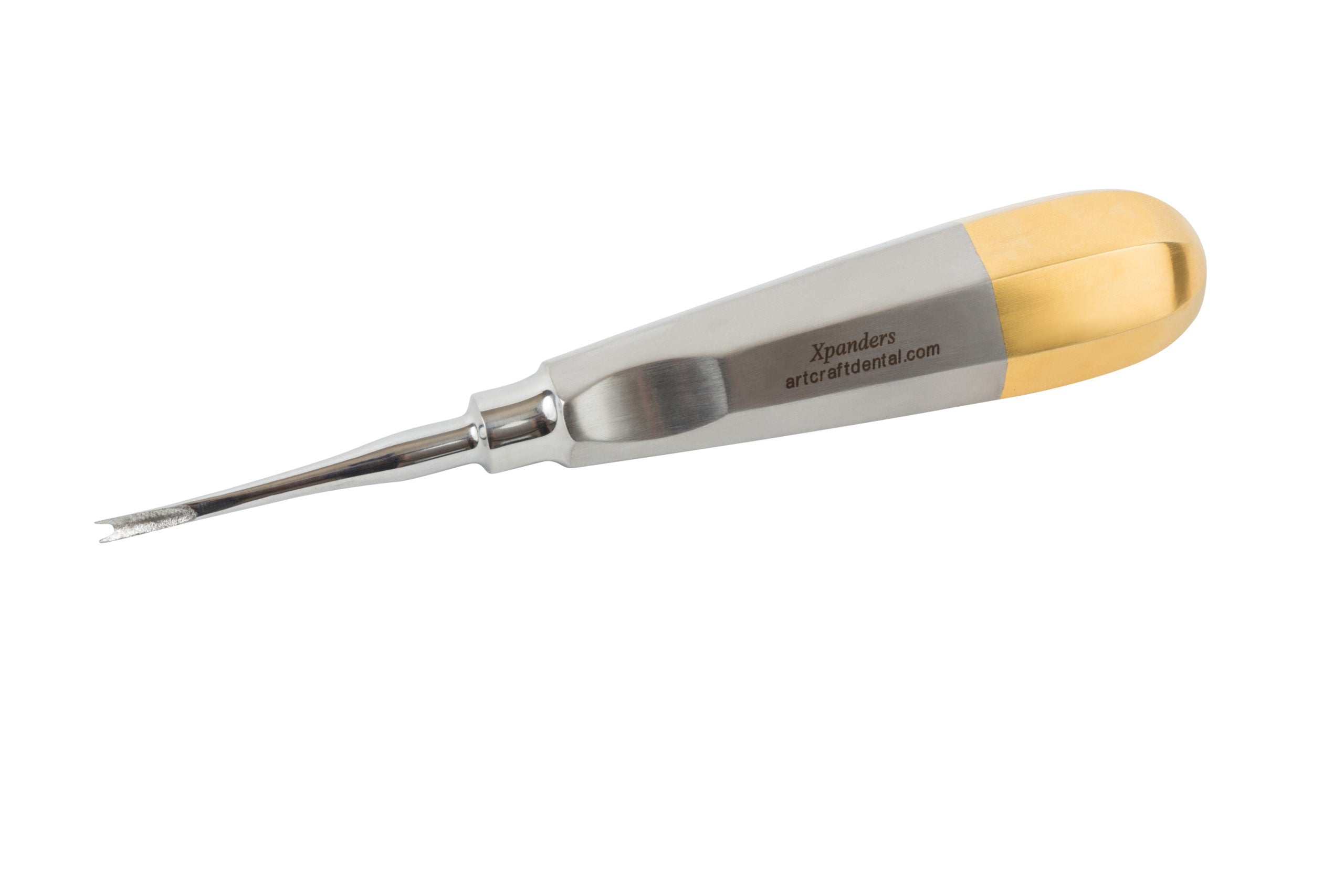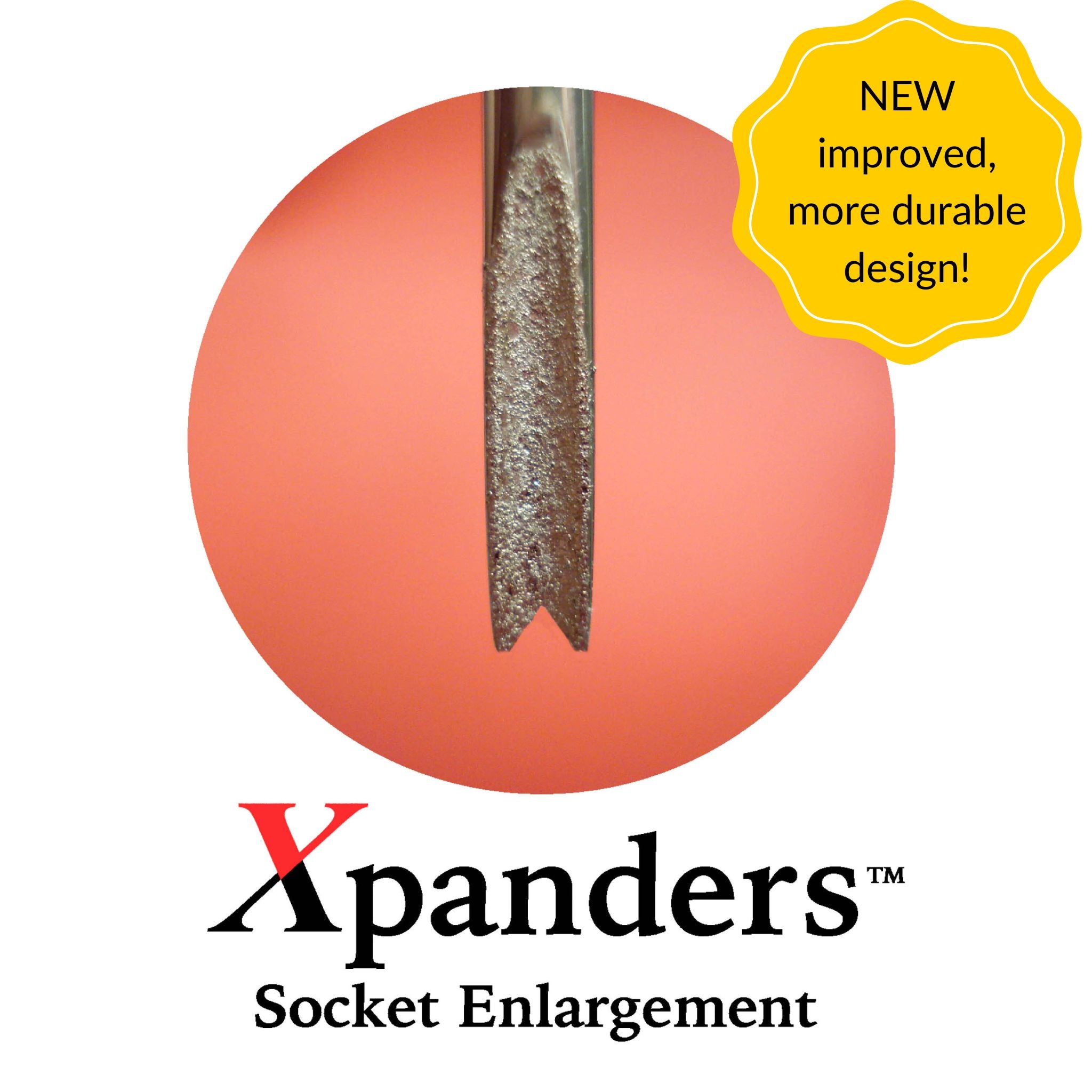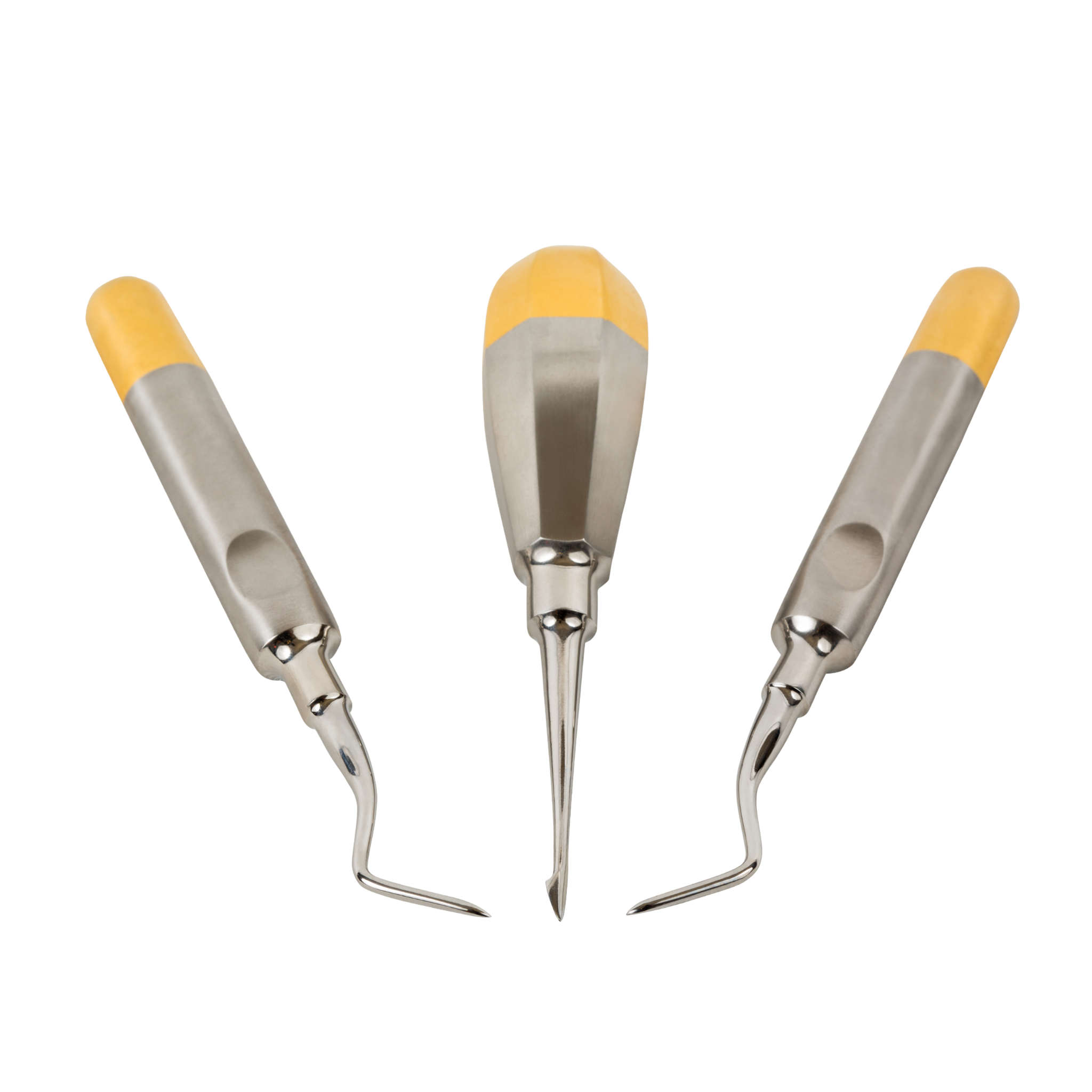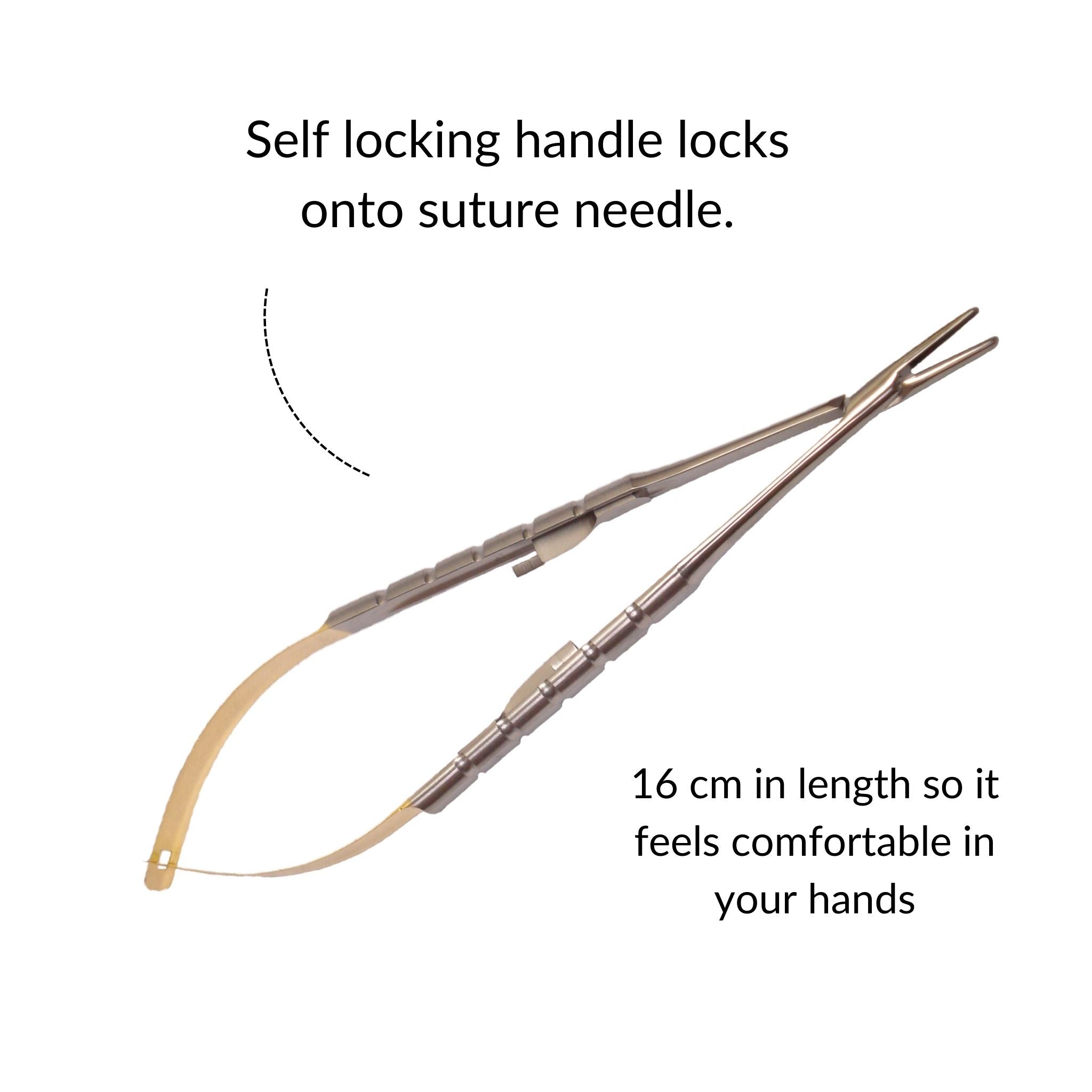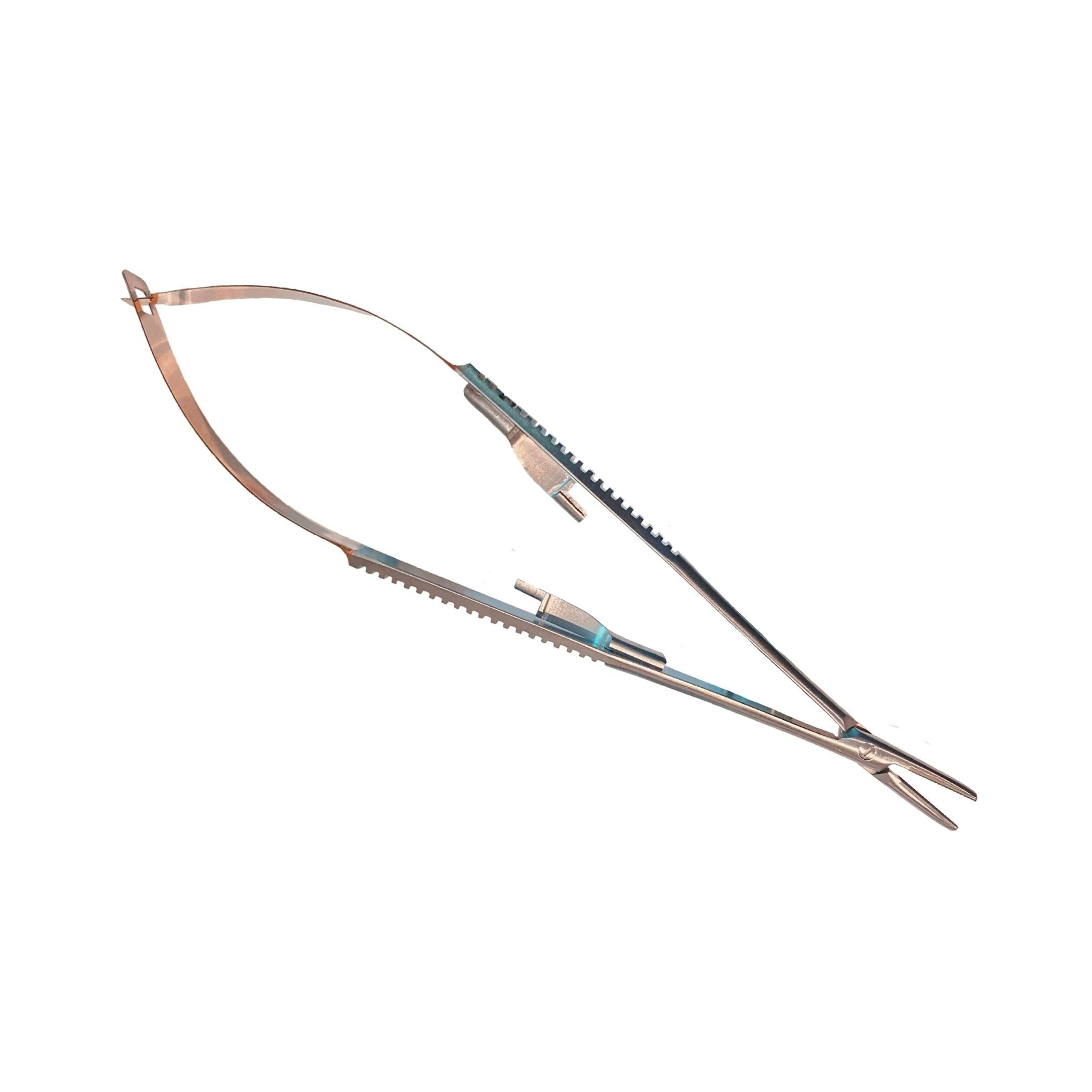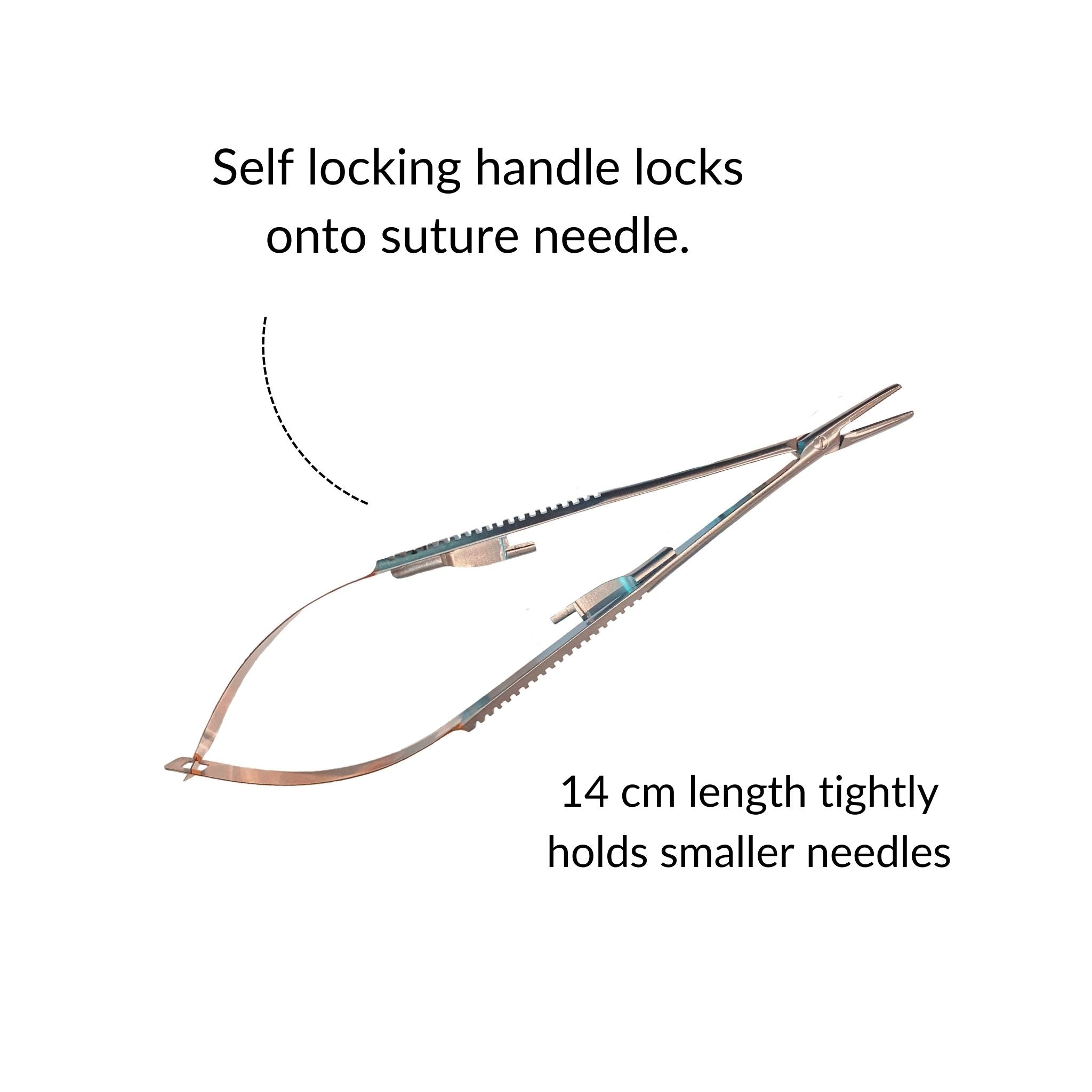When it comes to the different types of dental extraction forceps, there are two main classifications: serrated forceps vs non-serrated forceps. Which of these is right for your dental practice, though?
You need forceps that allows you to lock onto teeth with confidence to perform stress-free, efficient extractions. Not only do the right types of forceps make your life easier, but your patients will thank you, too.
Below, we’ll evaluate the different types of dental forceps you can choose from and help you pick the right style for effortless extractions every time. Gone are the days of dreading extractions – your process is about to change forever. Let’s get right into the importance of selecting the proper forceps.
Why the Types of Dental Forceps You Use Matter so Much
We likely don’t have to tell you what a difference your dental instruments make in your day-to-day procedures. However, we have heard from many dentists that they didn’t realize how much harder and more stressful they were making things on themselves than necessary.
So, allow us to say it again: the types of dental instruments you invest in for your practice are of the utmost importance.
You need the best dental tools possible. If you’re not sure why, our complete guide breaks it down for you. You get more out of your investment this way, and you won’t have to deal with replacements nearly as often. While cheap dental tools last just a few years at most, quality instruments will provide reliable use for decades to come.
But the reasons to take this decision seriously extend beyond just making the most of your budget. As we briefly touched on above, the right tools can transform the way you approach stress-inducing procedures, like extractions. While you may be using an older type of dental forceps, new inventions have changed the way dental professionals view extractions.
So, without any further ado, let’s evaluate the different types of dental forceps.
The Different Types of Dental Extraction Forceps
Different types of extractions call for different types of dental forceps. This can be broken down by the type of teeth being worked on.
Anterior Teeth Forceps
Maxillary anterior teeth forceps have straight, unbent beaks and are used on the superior anterior teeth, as the name suggests. The beaks are parallel and close completely together with minimal room between the blades of the forceps. Mandibular anterior forceps have beaks bent at almost 90 degrees to allow access to lower teeth. Many have English pattern beaks that are parallel to the handles. The design of these forceps lends itself well to the right and left upper quadrants.
Canine or Bicuspid Forceps
Extracting canines or bicuspids, on the other hand, requires the use of a different type of dental extraction forceps. Upper forceps typically have a slight 20-degree angle bend in the beaks and lowers have a more dramatic 45-degree bend. The 150/151 set is the most common example.
Upper Molar Forceps
Of course, another essential type of dental forceps is the upper molar forceps. These have two bends in the stem to allow better access to the posterior area. The beaks have two styles: a smooth, wide blade, and a narrow hook or horn. The two beak types are used in various combinations. The hook or horn typically fits into the bifurcation of the roots of the maxillary molars. You may even find these available in both upper right and upper left styles for more precise extractions.
Lower Molar Forceps
The lower molar forceps look quite different from their upper moral counterparts. They have heavy blades or horns to aid in removing large mandibular molars. Both blades have a projection, and the grips are often curved to be more ergonomic and allow for stronger clamping. The design of these types of dental forceps allows for the lifting of the tooth during extraction.
This should provide you with a better understanding of the different types of dental extraction forceps – but these can be broken down even further into serrated forceps vs non-serrated forceps. And this is where you need to pay close attention – as making the right choice here will drastically change your procedures for the better. Let’s discuss…
Serrated Forceps vs Non-Serrated Forceps: Which is the Right Choice for Your Dental Practice?
The main difference between serrated forceps vs non-serrated forceps is obvious. After all, it’s in the name. Serrated forceps feature serrated beaks, while the non-serrated style features smooth beaks. And this subtle design difference leads to serious differences in how the forceps work.
With non-serrated forceps – which have been the most common choice traditionally – you will likely experience slippage during extractions. This is especially true for deeply rooted canines and molars. Using these types of dental forceps leads to inefficient procedures as you waste time grappling with the tooth. The more you slip around in your patient’s mouth, the more stressful the procedure becomes. And you can bet that the patients themselves are feeling that stress – along with a lot of pain.
That’s where serrated forceps come in to save the day – and change the way you approach extractions once and for all.
The serrated beaks allow you to grip your patient’s tooth in confidence. No slippage whatsoever. As a result, extractions are much less stressful for both you and your patient. You will enjoy greater predictability when you reach into your patient’s mouth, too. These forceps are dependable and reliable. You will find that with these in your dentistry arsenal, you feel more confident going into extractions – and you won’t dread seeing them on your schedule any longer.
Now – the question becomes, where can you go for high-quality, reliable serrated forceps? Look no further than ArtCraft Dental.
Transform the Way You Approach Extractions With ArtCraft Dental’s Serrated Forceps
With just about 40 years of experience in dentistry, our founder – Dr. David Fyffe – learned firsthand just how important a dentist’s instruments are. More specifically, he encountered what most dentists have: typical instruments fall short of expectations.
They break prematurely and they lack optimal design for efficient, dependable use. He knew something had to change. So, he decided to do something about it – and was awarded his first patent in 1994 for a pediatric-size forceps that reduced the risk of “popping” during children’s extractions.
Fast forward to today, and ArtCraft Dental has earned the reputation as the premier choice for dental instruments in the USA. These are the #1 dentist forceps on the market – and you don’t have to take our word for it:
“All other forceps I’ve had do not grip the tooth properly due to poor beak design. These are great! Well designed and high quality.” – Dr. Lee Family Dentistry
“These are the only forceps I use now. They really grab and hold – I love them!” – Dr. Brian Nguyen
“These are amazing forceps. I got both styles upper and lower. I highly recommend for any dentist with old style forceps to upgrade to these.” – Dr. Wayne Lee
The magic behind these forceps is partially attributed to the serrated beak design. This allows you to lock onto teeth and individual section molar roots with complete confidence knowing you can apply force without slipping off. But that’s not all – it’s also the parallel beak design that locks onto more total surface area of the tooth. Forceps with dramatically curved beaks tend to contact the tooth only at the neck – near the gum line, and they exert a “pinching” force. This leads to crowns snapping off at the gum line. Overly curved beaks just make life harder for dentists – so we changed hat.
Because these forceps are universal, you can use them on any teeth. No need to buy all the different types of dental extraction forceps. This one set is all you need. And you can invest with confidence knowing these will stand the test of time thanks to the highest quality French 420 grade surgical stainless steel.
There’s no question – these are the best dental extraction forceps for predictable, repeatable procedures. It’s time to transform the way you look at extractions – and these instruments by dentists, for dentists, can help. So, upgrade your arsenal today at ArtCraft Dental.
Final Thoughts on Serrated Forceps vs Non Serrated Forceps
We hope you gained clarity on not just the importance of choosing the right forceps for your dental practice – but on which of the different types of dental forceps is best for your office.
To summarize, the decision between serrated forceps vs non serrated forceps is a no-brainer. One allows you to lock onto teeth with confidence and perform effortless, stress-free procedures. The other leaves you dreading extractions due to low confidence and constant slippage. Which would you prefer?
Along with these incredible forceps, you’ll find other must-have dental instruments in our catalog. While you’re on our site, be sure to explore some of these other intuitive inventions – like our temporary crown remover, crown spreader, root elevator dental tool, and our revolutionary tooth elevator.
With direct-to-dentist pricing, fast + free shipping, and a 60-day free trial period, what more could you ask for?







